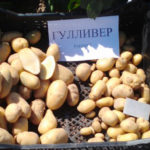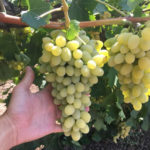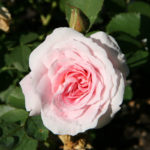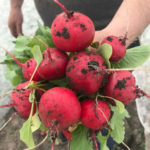Honeysuckle variety Titmouse
Honeysuckle ... Russian people got acquainted with its unusual berries when they began to explore the Far East and Kamchatka. The fruits of the plant turned out to be very unusual both in color and in shape: they did not at all resemble the usual raspberries, strawberries, blueberries ...
But for three centuries now, honeysuckle has served people. It is both tasty and healthy, and is widely used in folk medicine. In recent decades, many cultivars have been created, the berries of which are significantly superior to the wild honeysuckle, which was first seen by the discoverers of the North. We will now tell you more about one of the varieties - Titmouse.
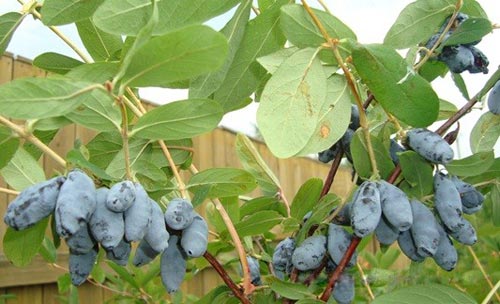
About creating a variety
Moscow breeders A. Skvortsov and A. Kuklina, who worked in the nursery of the Main Botanical Garden of the capital, gave him a "ticket to life". The seedlings selected in the Magadan region and Kamchatka served as the material for obtaining the variety.
The application for registration of the variety was received in 1985, and it was entered into the Register three years later. Since then, it has become a popular garden plant that has proven itself well in various climatic zones, especially in the North.
Description of the plant and berries
Refers to vigorous honeysuckle, with a height of an adult bush up to 2 meters and even slightly higher. It is noteworthy that in the first 2-3 years the bush grows extremely slowly, and reaches its full size only by 6 or even 7 years.
The crown is rounded, with beautifully curved shoots, brownish in the first year of development, densely covered with strongly pubescent matte leaves. The average size of a single sheet is 6 by 3 cm, it is noticeably elongated in length.
Flowers appear in early spring, they are small, pale yellow, bisexual, collected in small inflorescences. Flies, bumblebees and bees are actively involved in pollination. Self-pollination of Titmouse is low, a significant increase in yield is observed when using varieties Fortuna, Moskovskaya 23, Kamchadalka, Malvina.
Interesting! In honeysuckle, from two flowers, one berry is formed, inside which two chambers are hidden.
Features of berries
The size is large, weighing from 0.8 to 1 gram. The shape is slightly irregular, oblong, elliptical, at the tip resembling a tiny saucer. At first, the berry is yellowish-gray, but at the stage of maturity it is almost black, with a characteristic bluish bloom. The taste of the pulp is gentle, refreshing, the skin is very thin, almost invisible in the mouth. This pleasant factor also turns out to be a disadvantage of the variety: the fruits are almost impossible to transport and store.
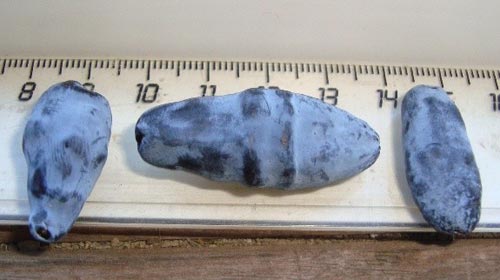
The second difficulty is uneven ripening combined with rapid shedding of the berries. These two reasons make it impossible for a wide industrial use of the Titmouse, although on private plots it is great.
The berries begin to ripen early, the first ripe ones can be picked in mid-June. 5-7 kg of fruits are harvested from one adult bush!
Agricultural technology and use
The care of the variety does not differ from that used for all honeysuckles of Kamchatka origin. In general, the shrub is unpretentious, extremely frost-resistant. A feature is the lag of the bark at about three years of age, when it can separate from the trunk in the form of thin, long lashes.
The plant is flexible, adapting to different soils and lighting conditions. Still prefers semi-shaded areas with moist, well-aerated soil.
Important! The bushes of this variety, however, like many other honeysuckle, are capable of bearing fruit in one place for over 50 years.
The crop is usually consumed without processing, freshly picked. You can make jams and preserves from berries, make juices and compotes. As already mentioned, it is widely used in folk medicine, in particular for hypertension and cardiovascular diseases.Craftsmen make excellent homemade wine from honeysuckle.
Titmouse, being a highly decorative bush, will decorate a corner of the garden for many years, while its owner will be able to regularly receive very early, healthy and tasty berries - a storehouse of vitamins and amino acids.
